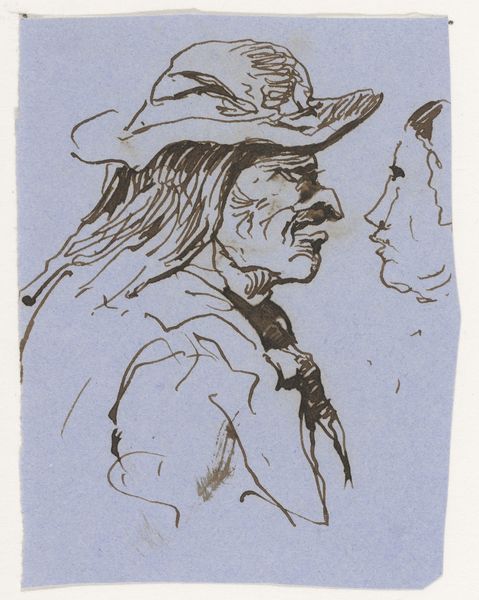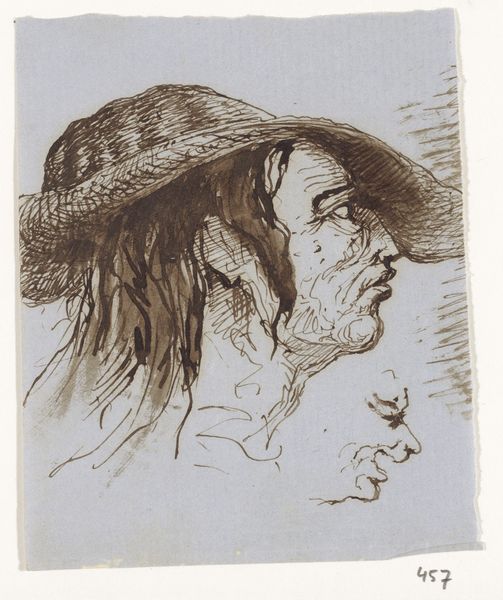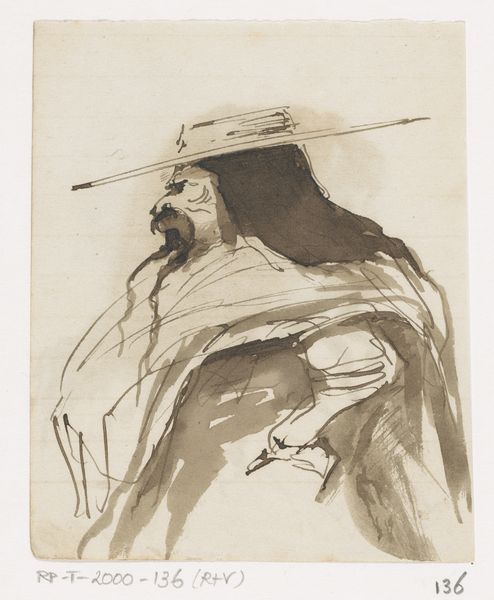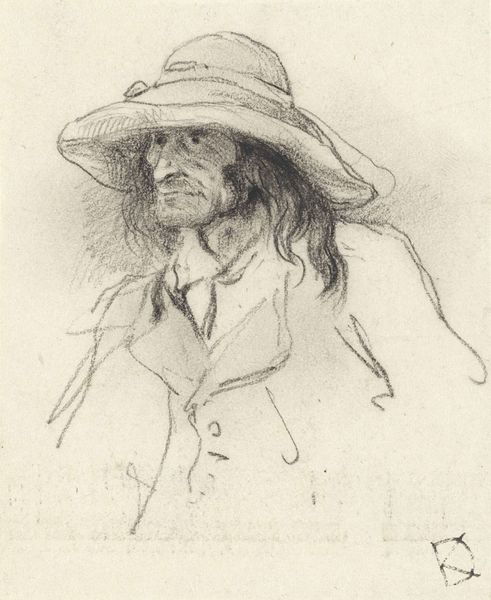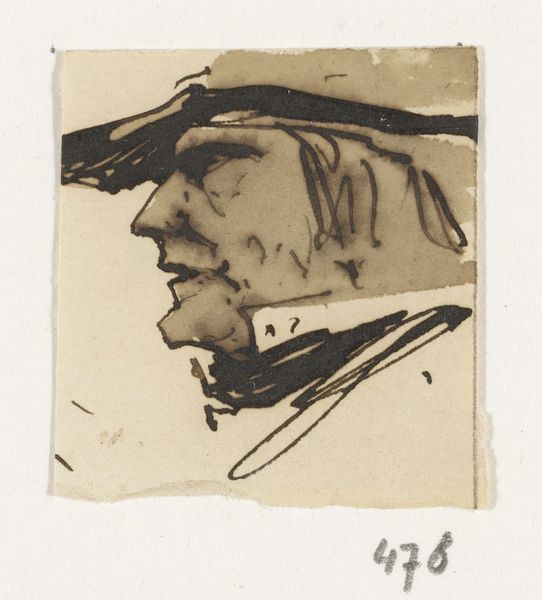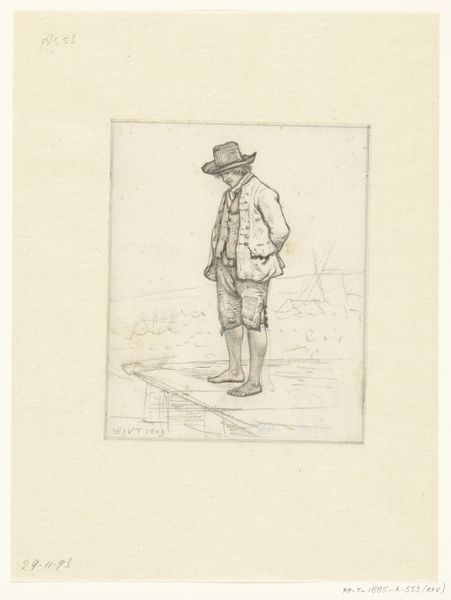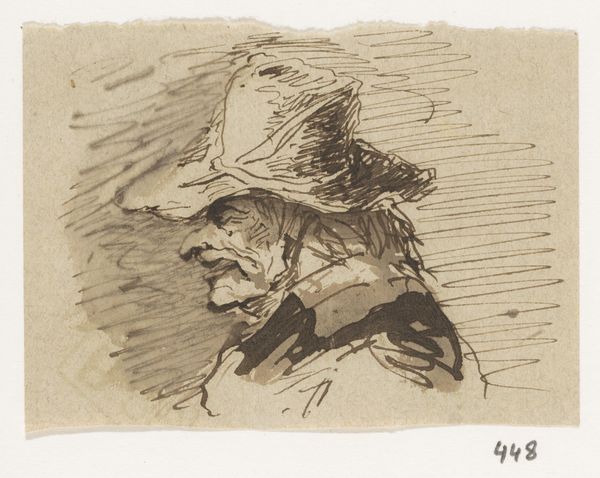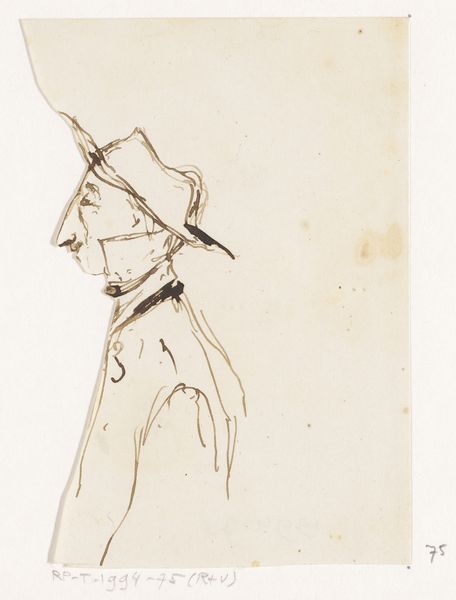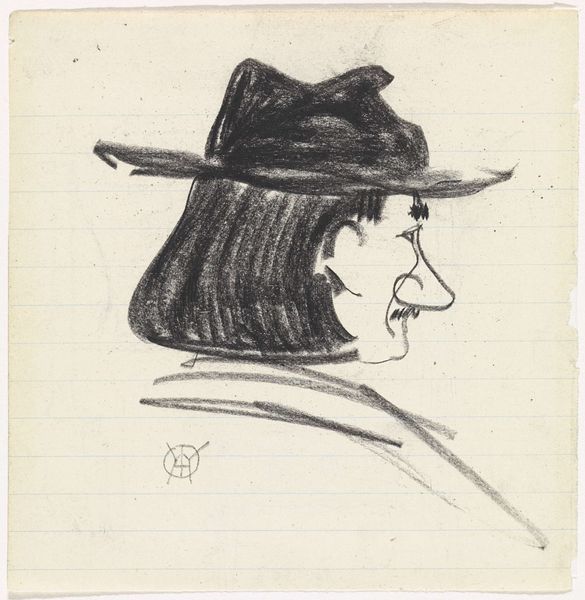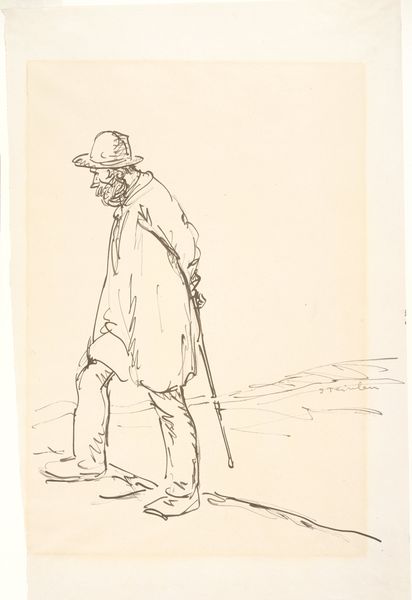
Dimensions: height 79 mm, width 81 mm
Copyright: Rijks Museum: Open Domain
Editor: So, this ink drawing, "Man met hoed," by Johannes Tavenraat, dated somewhere between 1840 and 1880, strikes me as quite simple in its rendering, almost like a quick sketch, but the hat gives it a sort of flamboyant flair. What do you see in this piece, from a historical perspective? Curator: What grabs my attention is less the apparent flamboyance and more the social statement it subtly presents. Consider the period: rapidly industrializing Europe. The *hat*, a symbol of class and profession, is rendered here in a very deliberate way. This isn't necessarily about celebrating the individual but situating him within a social framework. Who was Tavenraat portraying, and for what intended audience? That’s where the true intrigue lies. Editor: That’s fascinating. I hadn’t really considered the hat as a marker of social status. So, are you saying that an artwork such as this would reflect more broadly what role art should have in the society? Curator: Precisely! Museums today, in showcasing art like this, influence our understanding of that era and the artist's place within it. It prompts questions: Was this drawing meant for public display, or a private study? Did Tavenraat aim to critique or to uphold social norms? We interpret such decisions. Editor: So, the power dynamics between the artist, the subject, and ultimately the viewer become part of the historical narrative. I think it brings the artwork to life. Thank you for your insight! Curator: It was my pleasure. It's in posing questions about such social relationships that we genuinely start to appreciate historical art.
Comments
No comments
Be the first to comment and join the conversation on the ultimate creative platform.
